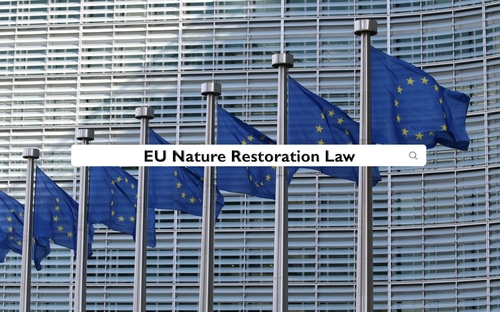On June 17, the European Union adopted a historic law aimed at restoring 20% of its degraded ecosystems by 2030.
This legislation is an integral part of the European Green Deal, aimed at mitigating the impacts of climate change and strengthening biodiversity.
A key text that commits the EU to safeguarding nature
The adoption of the Nature Restoration Act marks a crucial step for the European Union in its fight against biodiversity loss and climate change. Adopted by the Council of the EU, this legislation requires member states to restore 20% of degraded terrestrial and marine ecosystems by 2030. This objective is an integral part of the European Green Deal, which aims to achieve the end of net carbon emissions. greenhouse gases by 2050.
The objectives of this law go beyond environmental actions. They also affect socio-economic aspects, seeking to protect the quality of life of European citizens, explains the European Council. These measures are also aligned in order to respect the EU’s international commitments in terms of biodiversity, such as the Kunming-Montreal global framework agreed at COP15.
What measures does the nature restoration law provide?
The new nature restoration law introduces specific measures for different types of ecosystems, including terrestrial, marine, freshwater and urban spaces. For habitats in poor condition, Member States must restore 30% by 2030, 60% by 2040 and 90% by 2050. In addition, efforts must be made to avoid deterioration of areas in good condition .
Measures include restoring agricultural land using agroecological practices like organic farming and agroforestry. Forests will benefit from management techniques and continuous coverage. In total, around 3 billion trees will need to be planted by 2030, while urban ecosystems will need to avoid the net loss of green spaces and forest cover.
Efforts will also be made to restore dried-out peatlands and remove obstacles to river connectivity, thereby transforming 25,000 km of rivers into free-flowing rivers by 2030. Finally, the law provides measures to combat decline in pollinator populations and improve essential ecosystem services.
Green Deal: controversial adoption of the text
The adoption of this law was marked by intense debates and political disagreements. Austria’s « surprise » support ultimately tipped the balance in favor of the legislation, despite internal criticism from the Austrian government. “My conscience tells me unequivocally that when the happiness of future generations is at stake, courageous decisions are necessary,” declared Leonore Gewessler, Austrian Minister of the Environment.
Farmers, worried about the new regulations, have expressed concerns about the impact on their already under pressure sector. They fear additional burdens and a reduction in food production. However, the legislation also aims to strengthen agricultural resilience by integrating sustainable practices.
This nature restoration law is a historic victory for environmental defenders. Environmental NGOs, such as the WWF, hail this legislation as a “historic victory” and describe it as a “turning point for nature and society”.
Member States are now required to implement these measures effectively and without delay, thereby ensuring a sustainable and prosperous future for future generations.




